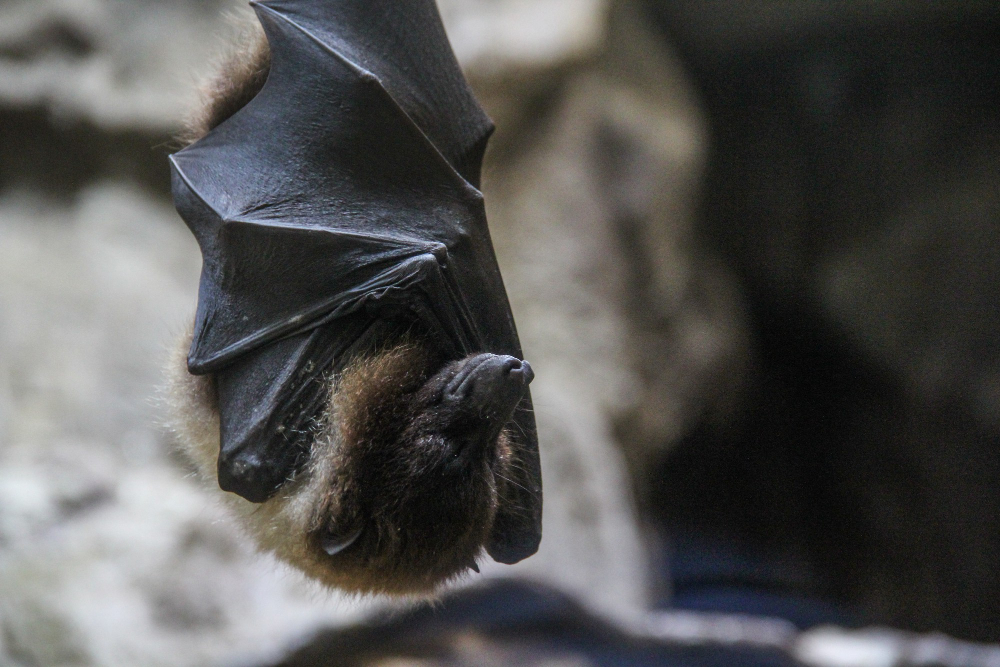Animal Bites and Rabies
Animal Bites and Rabies
In Benton County, people really love animals – the ones we have in our homes, and the ones we encounter in nature. Even if animals seem safe, they can get scared or defensive, and bites can happen. This goes for both wild animals and pets. So, it’s important to be cautious and show animals respect. Sometimes even pets can act unexpectedly, especially if they are ill. Rabies is an infectious viral disease that affects the nervous system, which can make animals act in strange ways. Rabies is transmitted by a bite or saliva from a rabid animal, so it is important to know what to do in the event that any animal bites you.

Any penetration of the skin by teeth counts as a bite, and all bites carry a risk of rabies.
If any animal bites you, it is important to notify a healthcare provider. This is true even for household pets, but is essential if you receive a bite from a wild animal, such as a bat.
Prompt cleaning of the wound is best.
Please consult with your healthcare provider for any special wound-care instructions. Watch the area of the bite for signs of infection. Continue to work with your healthcare provider if swelling, redness, discharge, or increased pain occurs.
Determine the date of your last tetanus and diphtheria shot.
If it has been more than 5 years since your last dose, a booster shot is recommended. If you have never completed a full 3-dose series, your healthcare provider may want to do more medical follow-up.
Oregon law requires Health Care Providers to report all bites to Benton County Health Department. They will fill out an Animal Bite Report form with all the information possible, and then forward it to us within a 24-hour period. Environmental Health and Communicable Diseases staff will evaluate the rabies vaccination status/ history of any pets. They will also provide counsel on the need for follow-up care in the case of any wild or feral animals.
If you get treatment quickly after exposure to rabies, you should be fine. If you do not get treatment, rabies is fatal.
Click here to download a copy of the Animal Bite Reporting Form for yourself
Protect Yourself (And Others)
The most important thing you can do to protect against rabies is to keep your own pets up to date on their rabies vaccinations. Vaccinating pets not only protects them but it provides a “buffer zone” between humans and rabid wild animals.
Other ways to protect your loved ones:
- Watch wildlife from a distance. Don’t approach or attempt to handle wild animals.
- Do not feed wild animals.
- Keep garbage in secure containers and away from wildlife.
- Feed pets indoors.
- Seal openings in attics, basements, porches, sheds, barns and screen chimneys that might provide access to bats and other wildlife.
A Special Note About Bats

Bats are fascinating creatures who play an important role in Benton County’s ecosystem. They make themselves especially helpful to humans by eating a lot of insects we consider pests. Although most bats do not have rabies, infected bats can give the disease to humans/other animals by biting or scratching, or through saliva contact with eyes, nose, mouth or an open wound.
People cannot get rabies just from seeing a bat in an attic, in a cave, or at a distance. In addition, people cannot get rabies from having contact with bat guano (feces), blood, or urine, or from touching a bat on its fur (even though no one should be handling bats!).
People usually know when a bat has bitten them. However, because bats have small teeth which may leave marks that are not easily visible, sometimes you should seek medical advice even if you don’t have an obvious bite wound. For example, if you wake up and find a bat in your room or that of an unattended child, or if you see a bat near a mentally impaired or intoxicated person, seek medical advice and have the bat tested. Similarly, we cannot tell if a bat has rabies just by looking at it, it is best if we can send the bat to a laboratory for rabies testing.
If you are bitten by a bat – or if infectious material (such as saliva) from a bat gets into your eyes, nose, mouth, or a wound – follow the steps above. Please also consider collecting the bat for lab testing, if it is safe to do so.
Capturing a Bat Loose in Your Home
If a bat is present in your home and you cannot rule out the possibility of exposure, leave the bat alone and contact an animal-control professional for assistance. If professional help is unavailable, click here for guidance on how to capture the bat safely.
What you will need:
- Leather work gloves (put them on)
- Small box or coffee can
- Piece of cardboard
- Tape
When the bat lands, approach it slowly, while wearing the gloves, and place the box or coffee can over it. Slide the cardboard under the container to trap the bat inside. Tape the cardboard to the container securely, and punch small holes in the cardboard, allowing the bat to breathe. Contact your health department or animal-control authority to make arrangements for rabies testing.
If you are sure no human or pet exposure has occurred, release the bat outdoors, away from people and pets.
Here is a short video describing how to safely catch a bat:
